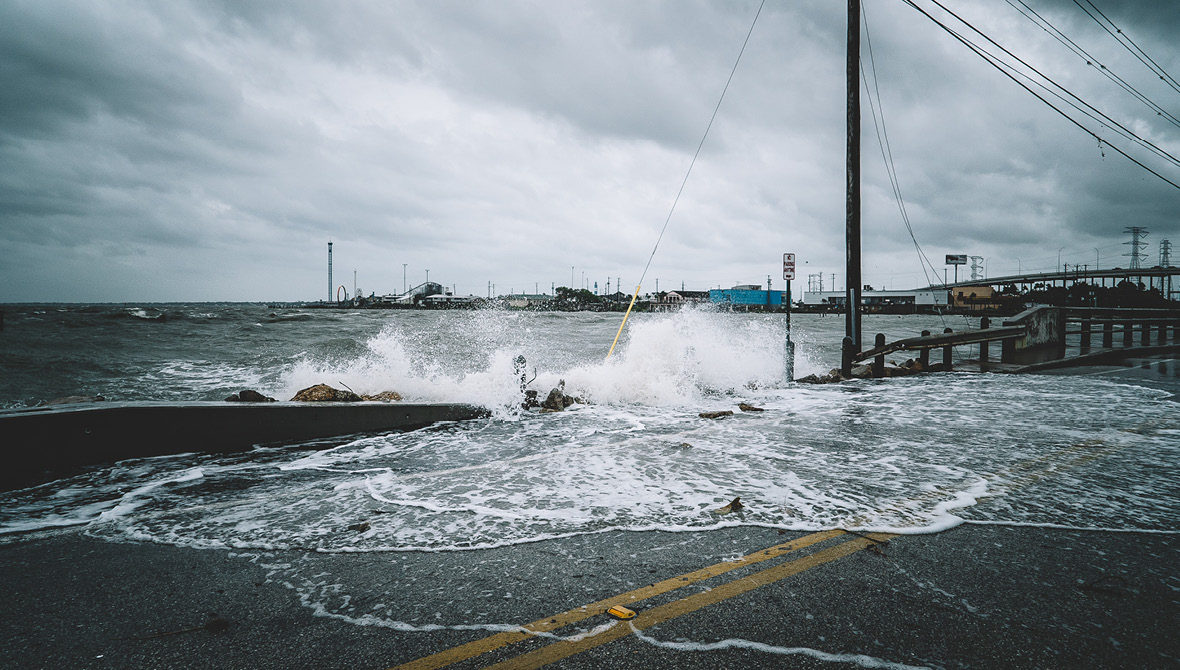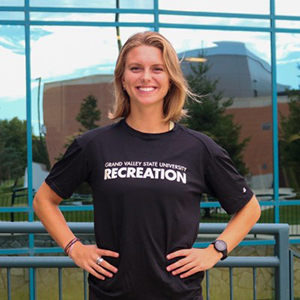Disaster Philanthropy is Transitioning for the Long Haul


 This article was first published in our 11 Trends in Philanthropy for 2023 report. Explore all 11 trends in the report.
This article was first published in our 11 Trends in Philanthropy for 2023 report. Explore all 11 trends in the report.
Want the latest trends, research, and more delivered right to your inbox? Subscribe to the Johnson Center email newsletter.
As Payton & Moody (2008) observed, “Philanthropy exists because of two truths about the human condition: things often go wrong, and things could always be better” (p. 63). The orientation of philanthropic institutions could be divided into those that respond to disasters when things go terribly wrong, and those focused on long-term development, aiming to make things better over time.
The traditional approach to climate-related disaster philanthropy has been simple and predictable: disaster strikes, followed by media attention and an outpouring of generosity with a touch of coordination; then, attention shifts, perhaps to another disaster — and generosity is directed back to business as usual (New Venture Fund, n.d.). Within this tradition, philanthropic actors have had well-defined roles: some engage in humanitarian emergency disaster relief, and others see themselves as having a distinct role in promoting longer-term community improvement.
“The good news is that the philanthropic infrastructure of disaster philanthropy has grown more sophisticated in its response to the growing threat of natural disasters. The bad news is that funding for those efforts has remained stagnant.”
Now, the game and the playbook are changing.1 However, the former is changing with shocking speed and the latter is evolving slowly. Globally, disasters are occurring with greater frequency and ferocity. Since 1980, the U.S. alone has had 332 weather and climate disasters where total damages for each event reached or exceeded $1 billion (in 2022 inflation-adjusted dollars), for a total cost of $2.275 trillion (NOAA National Centers for Environmental Information [NCEI]). Each decade, the average number of events occurring annually has increased at truly shocking rates (see Figure 1).
So far, the 2020s are shaping up to be even worse. NCEI reported 22 events in 2020, 20 in 2021, and 15 in the first nine months of 2022.
As the respites between disasters shorten, key actors — like the Center for Disaster Philanthropy (CDP) and many community foundations — are helping to drive the understanding that emergency response alone is unequal to the threat posed by recurring disasters (CDP & Candid, 2022). In addition, more philanthropic actors are focusing on facilitating shared learning in this space and incorporating considerations of equity.
Here are three compelling examples of how philanthropy is beginning to step up its game, drawing from domestic and international experience.
Low-income communities disproportionately suffer a greater impact from the social, health, and economic costs of disasters. Resiliency can best be cultivated by enhancing the capacity of community leadership.
The Philanthropic Preparedness, Resiliency and Emergency Partnership (PPREP) was developed by The Funders Network (TFN) in collaboration with CDP in 2014 to bring together community foundations in a peer-learning model that emphasizes community leadership. Focusing on a 10-state Midwestern region, “PPREP works to embed an equity lens into the cohort’s learning about preparedness, response and recovery practices and policies” (n.d., para. 2).
Due to climate change, hurricanes are becoming larger and more frequent. To address the full range of needs associated with these storms, both immediately and over time, CDP created the Atlantic Hurricane Season Recovery Fund in 2017.
Working closely with communities, CDP staff identify available resources and unmet needs. The fund supports initiatives and organizations on the ground that prioritize communities facing systemic barriers to equitable recovery. Looking beyond immediate responses, it focuses on meeting medium and long-term needs, including “rebuilding homes and livelihoods, mental health services, and other challenges identified by communities that arise as recovery efforts progress” (2022, para. 3).
In 2017, when devastating earthquakes hit Mexico, the Inter-American Foundation (IAF), an autonomous U.S. government agency, and the Charles Stewart Mott Foundation already had a longstanding effort to strengthen the community philanthropy sector in Mexico. This work led to a relatively new program to promote cross-border collaboration, now called Connecting Communities in the Americas.
In the wake of the earthquakes, U.S. community foundations wanted to help their sister organizations across the border. Until then, neither the IAF nor the Mott Foundation had funded disaster relief, but it was clear that their Mexican community foundation partners were taking on a key role not only in providing relief but laying the groundwork for medium and long-term recovery.
Thus, the Mexico Earthquake Recovery and Disaster Preparedness Fund was born (Boyer et al., 2018).2 The ability to catalyze local, national, and international resources months after the earthquakes struck indicated that there was a realization among donors that longer-term development had to take into account natural disasters.3
Now, just four years later, this fund has evolved into the Partnership for Disaster Recovery and Resilience (PDRR), expanding the partnership between the IAF and the Mott Foundation to include the Tinker Foundation, The Philanthropic Initiative, and the Climate and Land Use Alliance. The partnership is working to fund major needs in Central America, the region with the second highest risk for natural disaster in the world. The IAF has identified a cohort of organizations that will work to address climate change and resilience from different, innovative perspectives. Moving forward, these organizations will benefit from connections and peer learning.
There are three key takeaways from this research:
Philanthropy-serving organizations (PSOs) and funding collaboratives are taking on an increasingly important role in philanthropy’s response to disasters, especially before they strike. CDP, TFN, CCA, and the PDRR play a vital role in mobilizing resources, disseminating knowledge, and facilitating peer learning. PSOs provide the vital, connective tissue between community-focused responses and national and international actors.
Community foundations, in their capacity as place-based, long-term philanthropic actors, are evolving into on-the-ground leaders in preparedness, response coordination, and laying the groundwork for resilience and rebuilding. In the case of Mexico, where the capacity of municipal governments is often woefully underdeveloped, community foundations were the key leaders and conveners from the initial humanitarian response through rebuilding and developing resiliency.
The good news is that the philanthropic infrastructure of disaster philanthropy has grown more sophisticated in its response to the growing threat of natural disasters. The bad news is that funding for those efforts has remained stagnant. According to the 2022 Disaster Philanthropy report, resilience and preparedness funding accounts for about 2% of total grantmaking (p. 8).
Leaders in this field understand both the importance of strengthening responsiveness and resilience equitably and how to do it — via advocacy and capacity building. The open question is whether more philanthropic dollars will support those efforts.
_______________
1 The Center for Disaster Philanthropy provides such a playbook.
2 Michael Layton was a senior program specialist for the IAF at this time and played a key role in creating this initiative.
3 The partnership was one of the finalists in the P3 Impact Award, “to recognize and honor leading public-private partnerships (P3s) that improve communities and the world.”



Behrens, T., & Martin, T. (2020, January 13). Philanthropy will be on the front lines of climate change. 11 trends in philanthropy for 2020. Dorothy A. Johnson Center for Philanthropy. https://johnsoncenter.org/blog/philanthropy-will-be-on-the-front-lines-of-climate-change/
Boyer, G., Jesse, S. & Layton, M. (2018, March 7). Community-led response to Mexico’s earthquakes. Inter-American Foundation. https://www.iaf.gov/content/headline/community-led-response-to-mexicos-earthquakes/
Center for Disaster Philanthropy. (2022). CDP Atlantic hurricane season recovery fund. https://disasterphilanthropy.org/funds/cdp-atlantic-hurricane-season-recovery-fund/
Center for Disaster Philanthropy & Candid. (2022). Measuring the state of disaster philanthropy. https://disasterphilanthropy.candid.org/
Centre for Research on the Epidemiology of Disasters. (2022, April). 2021 disasters in numbers. https://reliefweb.int/report/world/2021-disasters-numbers
Connecting Communities in the Americas. (n.d.). CFLeads. https://cfleads.org/issues-we-work-on/connecting-communities-in-the-americas/
New Venture Fund. (n.d.). Improving disaster response: The story of the Center for Disaster Philanthropy. https://newventurefund.org/2021/10/27/improving-disaster-response-the-story-of-the-center-for-disaster-philanthropy/
NOAA National Centers for Environmental Information (NCEI). (2022). U.S. billion-dollar weather and climate disasters. https://www.ncei.noaa.gov/access/billions/
Payton, R. L., & Moody, M. P. (2008). Understanding philanthropy: Its meaning and mission. Indiana University Press.
The Funders Network. (n.d.). PPREP Philanthropic preparedness, resiliency and emergency partnership. https://www.fundersnetwork.org/pprep/